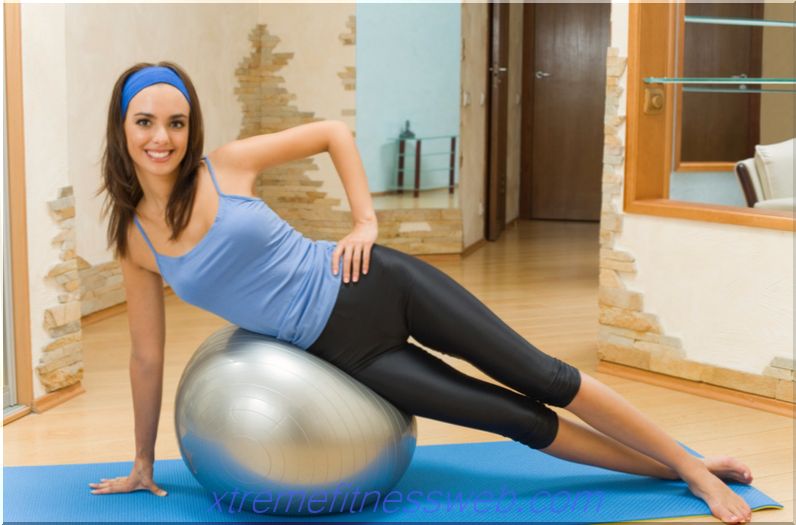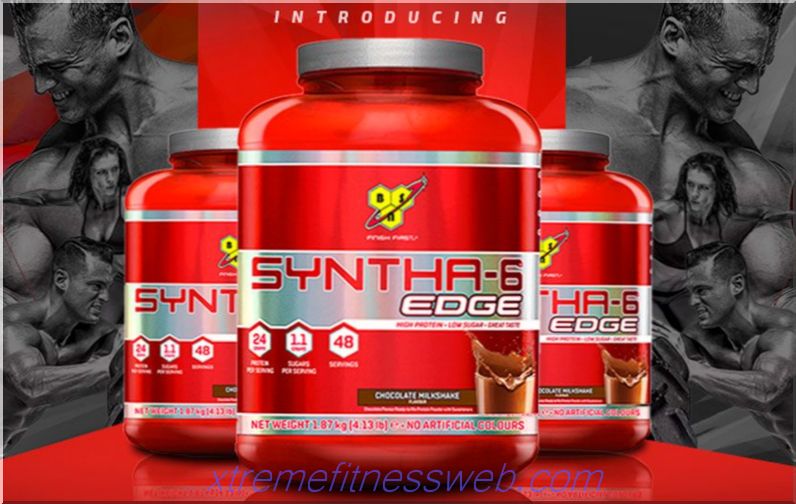- Execution technique
- Recommendations
- Execution options
- Parsing exercise
- Exercise Preparation
- Correct exercise
- Mistakes
- Performance Tips
- Program Inclusion
- Contraindications
- Interesting fact
- How to replace

There are a lot of exercises on the back. Leverage is an option for those who need to work out muscles in independent planes, that is, perform a movement on both the right and left half of the back separately. The linkage can be vertical and horizontal. The first option is more aimed at the width of the back, the second - at the "depth". The most popular leverage in the simulator "Hammer" sitting. It is carried out with the abdomen resting on the pillow of the simulator, and allows you to work out your back at a deeper amplitude than the usual block pull sitting to the belt. The exercise complements the basic movements on the back, and is used both in bodybuilding and in wellness fitness. Lever trainers are also good for correcting posture and rehabilitation after injuries.
Content
- 1 Technique
- 2 Recommendations
- 3 Options
- 3.1 Thrust in the lever simulator with one hand
- 4 Analysis of exercises
- 4.1 What muscles work
- 4.2 Benefits of Exercise
- 4.3 Disadvantages
- 5 Preparation for exercise
- 6 Correct exercise
- 7 Errors
- 8 Performance Tips
- 9 Inclusion in the program
- 10 Contraindications
- 11 Interesting fact
- 12 How to replace
Execution technique

Starting position
- Weights are hung on the linkage. Beginners should start with small weights, since the Hammer levers themselves also have a certain weight;
- The simulator support is adjusted so that the athlete comfortably reaches the handles with his hands;
- A direct grip is performed so that the midpoints of the handles lie in the middle of the palm;
- If hands slip off, use of straps is allowed
Traffic
- The work begins not with bending the arms at the elbows, but with the information of the shoulder blades to the spine;
- It is necessary to bring the shoulder blades to the spine, as if turning both halves of the back back;
- At the same time, bending in the elbow joint occurs, the lever structure is attracted to the body;
- On inspiration, the hands return the levers of the simulator to its original position
Attention
- Work at Hammer is an isolated job; you don’t have to try to strain your biceps with all your strength to pull the weight deeper into your stomach;
- “Rowing” in the simulator should be excluded, that is, movement in the lumbar spine, which helps bring weight to the stomach;
- It is necessary to activate the widest ones, learn to strain them, and not pull the biceps to your weight;
- Regarding kyphosis, there is no consensus - some sources recommend that you do not round your back in the starting position, others believe that such a start will only improve traction and allow the athlete to stretch and contract his back muscles more. In reality, it all depends on the state of the thoracic spine and the readiness of the back muscles. If the thoracic region is injured, then you should choose an exercise with a more stable position of the back.
Recommendations

- The jerk style is not valid. It is better to smoothly pull less substantial weight than to sharply push more significant;
- If the exercise is performed with two hands at the same time, you need to synchronize their work and avoid "advancing" with one hand. This allows you to avoid problems with muscle imbalances and impaired posture;
- It is necessary to master the starting skill “from the scapula of the shoulder blades”, and not from the bending of the elbows, so that the back muscles and not the biceps are included in the work;
- If the athlete has problems starting, it’s worth switching to “one-armed” traction, and working out the skill in turn for each half of the back.
Execution options
One-arm linkage pull

To perform traction with one hand, it is necessary to fix the body so that the second hand can grab the handle of the simulator. The “not working” half of the back is stable, the scapula is brought to the spine and lowered to the pelvis. The working half of the back begins with bringing the scapula to the spine, and synchronous flexion in the elbow joint. The technique is similar to conventional linkage. This exercise allows you to balance muscle development and achieve a uniform set of muscle mass. For those who have curvature of the spine and impaired posture, this is a priority movement.
Parsing exercise
What muscles work

- The main muscles are the latitudinal and posterior deltoid bundles, plus the rhomboid muscles of the back due to bringing the scapula to the spine.
- The auxiliary muscles are the abs and the long back muscle such as stabilizers, biceps, forearm muscles, the major and minor round muscles of the back, as well as the trapezius muscles.
Benefits of exercise
- The work of the widest is quite difficult to isolate. In classic rods with a barbell and dumbbells, stabilizers, legs, muscles, and hulls are substantially included. This movement allows you to fully transfer the load to the widest;
- The design of the simulator is such that a powerful athlete can get the necessary amount of load in it and will be able to perform the exercise with significant weight, and a beginner will be able to work on technique, posture and use such a weight that is suitable for him;
- Exercise allows you to work out both "half" of the back separately and to avoid muscle imbalances;
- The amplitude of the work in the "Hammer" is slightly larger than when performing conventional block traction. Exercise is performed with maximum stretching of the muscle, this helps to get an excellent high-quality study of muscles;
- Work in the simulator allows you to engage in a safe mode, and will help beginners to develop the necessary neuromuscular connections and learn how to feel their muscles before moving on to free weights.
disadvantages
- The movement is not available to all athletes due to the fact that the simulator is quite rare in minimalistic halls. The car is already bought at large fitness centers, and small ones are forced to do only with a crossover;
- Exercise is not suitable for athletes with very short arms and short stature. They simply do not have enough arm length to work effectively in the simulator;
- Beginners can pull leverage toward themselves due to the biceps, and not the back, this does not allow to achieve the goal of the exercise;
- There is a risk of injury due to improper weight selection. Many people like to “hang” a large amount in a block simulator and then pull it due to inertia, but this is not the right strategy. For an isolating exercise, even for a strong muscle group, rather average weights are required.
Exercise Preparation
You should choose a trajectory so that it is close to horizontal. This is the optimal type of trajectory. Horizontal is achieved by properly setting the height of the seat. The athlete should touch the simulator cushion with the solar plexus, if this is not the case, the exercise is not performed correctly, due to a “bicep failure”.
The height of the seat should be such that the legs are completely touching the ground, and stood steadily. The grip is selected so that the work path is close to horizontal. There should be no discomfort in the shoulder joints.
Correct exercise

- If you look at the athlete from the side, his forearms move parallel to the floor, in a straight or slightly elliptical trajectory, in the second embodiment, the emphasis is on the elbows tightening to the body, and this version of the movement more includes diamond-shaped muscles;
- During the execution of the traction, the hands move at the same speed, do not allow to get ahead of one another;
- The amplitude of motion must be kept as close to natural as possible. Throwing elbows around the waist should be excluded so that the work is in an optimal trajectory;
- The pillow support throughout the movement is located near the solar plexus, displacement along the axis perpendicular to the spine during operation is not allowed;
- The choice of grip is relevant if the simulator has a flexible handle design. That is, they rotate around their axis, and you can turn your palms inward, or parallel to the floor plane;
- The main load falls on the broadest muscles, do not hold out for biceps;
- One-handed movements are allowed, but in all technical versions of the exercise, it is required to pull the shoulder blades to the spine.
Mistakes
- “Rowing” with the body, that is, a backward jerk during the start of the movement, and pushing the legs off the floor or the support of the simulator in order to lose weight faster;
- Aggressive footwork during the approach. No pedaling, pushing, or extension in the knee joint is allowed;
- Displacement of the body along and across the support of the simulator;
- Jerking biceps, bringing weight by hand;
- Breeding elbows to the sides as in traction on the back delta, but when working at the waist level;
- "Rest" between the repetitions prescribed by the plan, that is, dropping the weight on the stops and a pause in motion for a few seconds
Performance Tips

- Try to stretch your back muscles as much as possible in order to achieve their active contraction in the peak phase;
- Do not neglect the static muscle tension in the positive phase, and perform the negative phase more slowly to further work out the muscles;
- Try not to reach the weight with your hands and do not focus on the biceps;
- If it is possible to use the simulator with swinging arms, be aware that palms parallel to the floor will allow more inclusion of the posterior deltoid bundles, and palms inward - shift the focus to the middle of the back;
- If necessary, you can use the following trick - the weight drops two times slower than pulls to the belt. This allows you to additionally load the back muscles without using ultra-high weights. Such techniques are needed when the athlete has reached a plateau both in strength and in muscle hypertrophy and cannot achieve good results in the usual way.
Program Inclusion
Novice athletes, whose goal is closer to the aesthetics of the body, and not to the development of strength indicators, are recommended to replace the draft rod in the slope with lever traction. This is an acceptable replacement due to the large amplitude of movement, and active involvement of the back muscles in the work. Leverage sitting in a hammer may be the first back exercise in terms of such athletes.
If we are talking about the silovik, you can perform lever traction with moderate weight after the deadlift, but if you are talking about a mid-level athlete whose goal is to gain muscle mass, then the second after lifting with weights.
The meaning of the exercise is that it can be performed in a power style. Therefore, putting it at the end of the workout when pumping is performed, and various “injection injuries”, and small muscles, is not worth it.
The movement can alternate in plan with draft in the slope, or draft in the T-simulator, or draft T-neck, if necessary for working out the muscles at different angles.
Exercise is not very suitable for a pump-action style due to the fact that it requires full stretching of the working muscle. Therefore, most of it must be performed in 10-12 repetitions
Contraindications

The movement can be used for various violations of posture, as well as for hernias and protrusions. But in this case, an individual approach, a doctor’s permission and a slow, controlled style of work are required. For any problems with the back, you need to exclude the careless lifting of the weight jerky, and focus on the smoothness and pace of work.
Interesting fact
This exercise is a favorite alternative to the barbell pull from the famous Russian bodybuilder Stas Lindover. He believes that this movement is much more suitable for pumping the back than simple traction to the belt.
How to replace
An adequate replacement is a crossover traction with one hand with the stomach resting on the vertical back of a bench while sitting. But most people will not bother like that, and just do any kind of back pull, for example, with a barbell, dumbbells, or in a block simulator.







